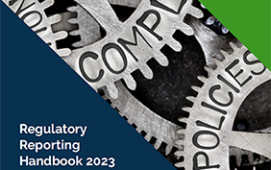
US municipal bonds have the potential for greater inclusion in ESG-themed portfolios but an absence of data on the impact investors have on the debt’s sustainability outcomes may be hindering their increased use.
A report by the United Nations’ Principles for Responsible Investing (PRI) stated that many so-called munis are ideally suited to investors’ ESG-themed strategies. Even those issues that are not labelled green could potentially be included because the projects they fund often have a sustainability benefit.
The pioneer of ESG in finance said, however, that it is difficult to measure the influence that investors have on projects likely to help the environment and social issues.
“Investors will have different sustainability objectives, and sufficient data on outcomes may not be available,” the report, entitled “The Thematic ESG Approach in US Municipal Bonds”, stated. “In addition, it is unclear how to link an investment in a muni bond to any given outcome achieved by a municipality.”
The report said that this was particularly apparent in bonds bought on the secondary market and if the “investment was not critical for the bond finding demand or for the project going ahead”.
Growing Market
Investors are scouring the US$4 trillion muni market – which provides financing for everything from new schools to major infrastructure projects – for sustainable investments, the report said. They provide a means for backing projects whose impacts are tangible and are sold in a variety of structures to suit a wider pool of investors.
At the same time financial institutions are including munis in exclusion screening processes with an eye to divesting from bonds that back projects at risk from climate or social impacts. Bond Buyermagazine noted a surge in demand for ESG information on munis’ exposure to climate risks.
Identifying potentially good sustainability investments is easier than establishing the risks they face. Bonds must explicitly explain how their proceeds will be used and that includes sustainability projects. But ascertaining physical climate risks requires being able to link the bond to its use and location on the ground. Several companies, including Intercontinental Exchange (ICE) and the FactSet-managed Cusip Global Services, have deployed geospatial data to the task.
Most sustainability investors looking to munis will be drawn to those labelled as green. But again, the PRI said these were subject to scrutiny.
“The extent to which such instruments are genuinely supporting sustainable finance rests on how robust and rigorous the standards used to issue the labelled bonds are, as well as on the underlying data and methodologies used to structure the bond,” it stated in the report.
Non-Labelled Bonds
The PRI further said that the market could be overlooking non-labelled munis – and even those that are excluded through ESG screening methodologies – that might be considered green with greater examination of their use-of-proceeds information.
Among them, it included gaming and lottery bonds, alcohol-linked bonds and those connected to the Gulf of Mexico Energy Security Act (GOMESA), which benefit from oil and gas production within the Gulf of Mexico.
“While some investors who focus on sustainability criteria screen out these types of bonds, others do not, finding that the way the bond proceeds are used – for instance towards an environmentally or socially beneficial project – can outweigh concerns about the source of funds.”
The PRI noted that political pushback against ESG investments in the US was also providing a headwind to their inclusion on sustainability-themed portfolios.
It concluded that improvements in green labelling assurance should “help investors improve their assessment of and reporting on the environmental and social outcomes of their investments”.
Subscribe to our newsletter




